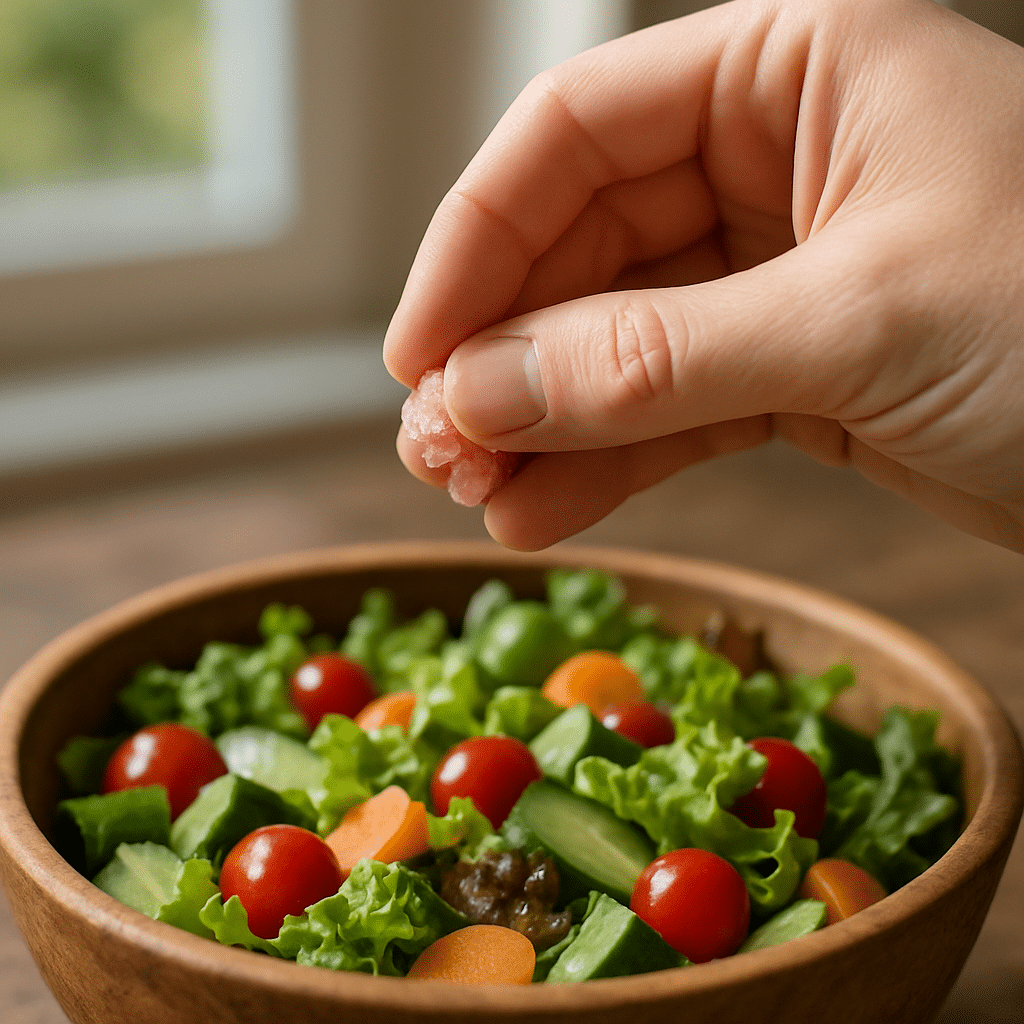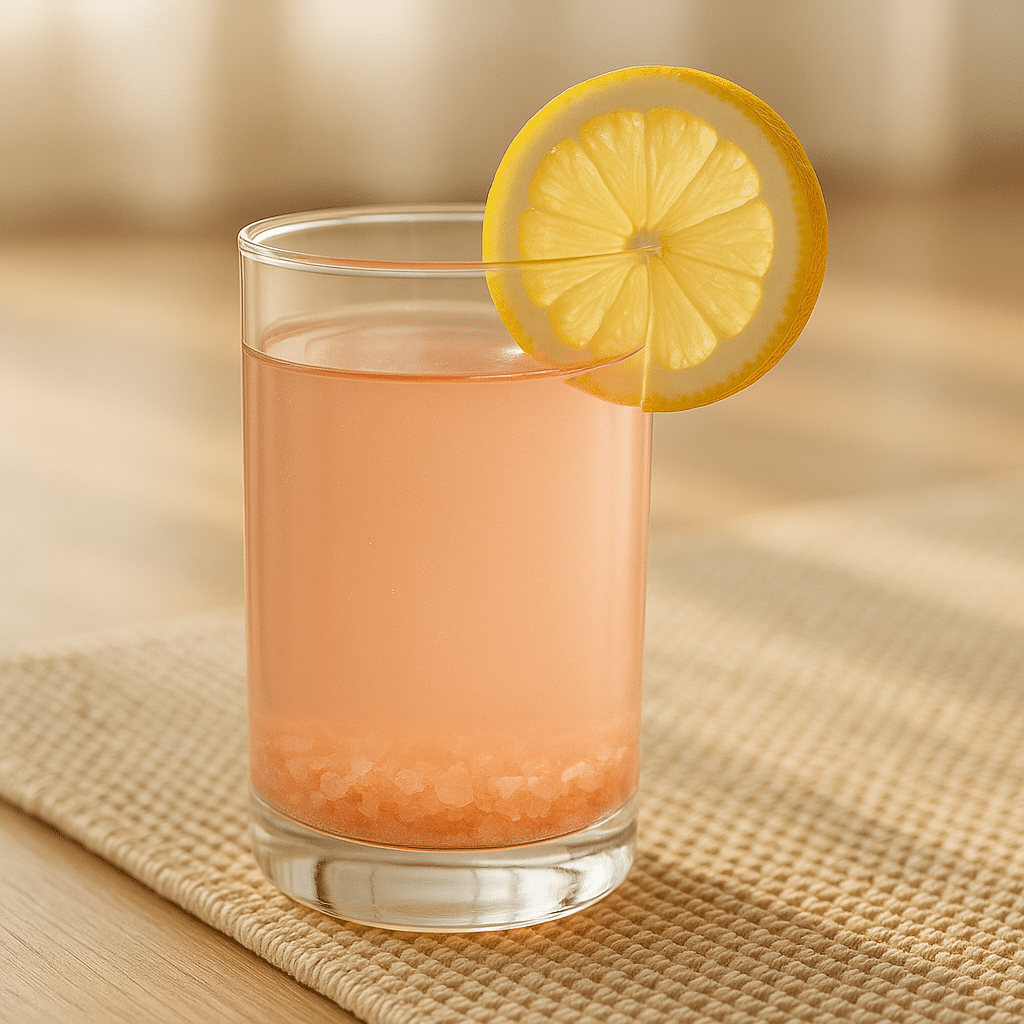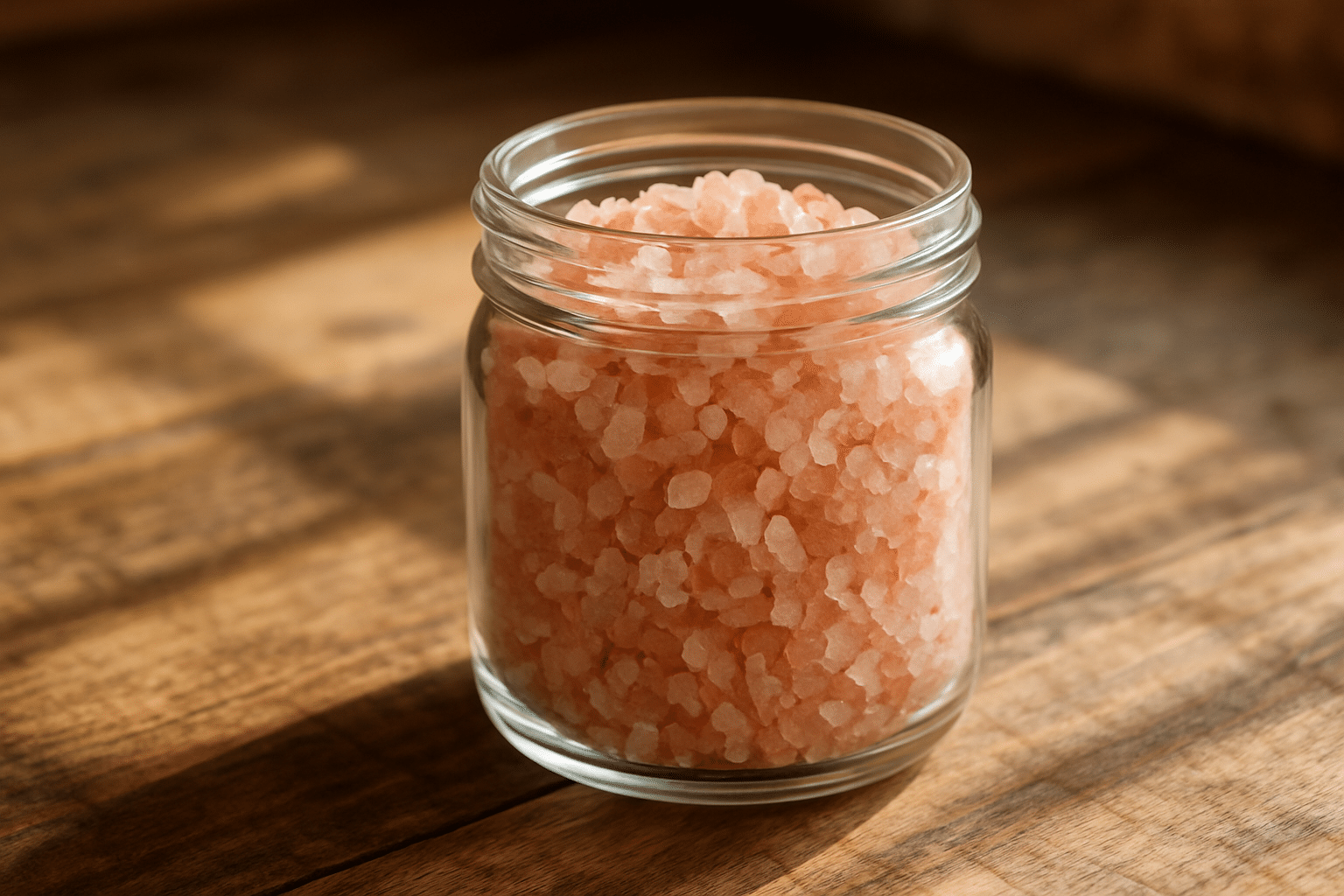When it comes to healthy living, natural ingredients have always sparked curiosity—and pink salt advantages are among the most talked-about today. From mineral-rich detox drinks to everyday seasoning swaps, Himalayan pink salt is making waves not just for its rosy hue but also for its potential health perks.
But is pink salt really better than regular salt, or is it just another wellness trend dressed up in pretty packaging?
In this guide, we’ll uncover the truth about pink salt—where it comes from, how it compares to table and sea salt, what nutrients it contains, and whether it truly supports weight loss, digestion, or detox. We’ll also walk through real recipes and uses, daily consumption advice, and expert opinions to help you decide if pink salt deserves a spot in your pantry.
If you’re curious about swapping your regular table salt for something more natural—or you’ve heard about the viral “pink salt trick”—you’re in the right place.
👉 Don’t miss our Pink Salt Trick for Weight Loss if you want to dive deeper into its trending detox benefits.
Table of Contents
Understanding Pink Salt and Its Origins
What is pink salt and where does it come from?
Himalayan pink salt is a naturally occurring rock salt mined from the ancient sea salt deposits of the Khewra Salt Mine in Pakistan, near the base of the Himalayas. Unlike standard table salt, it’s harvested by hand and left unrefined, which preserves its natural color and mineral content.
So, why is it pink? The signature rosy hue comes from trace minerals—particularly iron oxide—that give the salt its distinct color. Over the years, pink salt has gained popularity not just for its beauty but for the many pink salt advantages linked to wellness and natural living.
While pink salt may look exotic, it’s still chemically similar to common salt—primarily composed of sodium chloride. However, its unrefined nature and trace minerals set it apart in the world of natural food products.
Why is Himalayan pink salt different from table salt?
Regular table salt is typically highly processed. It often contains anti-caking agents, bleach, and added iodine—substances designed to extend shelf life or prevent clumping, but which some people try to avoid in pursuit of cleaner eating.
In contrast, Himalayan pink salt goes through minimal processing. It retains more than 80 trace minerals and elements, including potassium, magnesium, and calcium—all of which contribute to the pink salt advantages we’ll explore throughout this article.
Here’s a quick comparison:
| Feature | Table Salt | Himalayan Pink Salt |
|---|---|---|
| Processing | Highly refined | Minimally processed |
| Additives | Yes (iodine, anti-caking agents) | None |
| Color | Pure white | Pink or reddish |
| Mineral Content | Sodium chloride only | Contains 80+ trace minerals |
| Source | Evaporated seawater | Mined from ancient salt beds in Pakistan |
So when people ask, “Is pink salt better than sea salt or table salt?”—the answer often depends on what you’re looking for: less processing, richer mineral content, or a natural source of sodium. And for many, these unique characteristics are exactly why the advantages of pink salt are so highly valued in the health and wellness world.
Looking for inspiration? Try this simple and healthy Pink Salt Water Recipe to explore the detox potential of Himalayan salt.

Nutritional Benefits of Pink Salt
Key minerals found in pink salt
One of the most frequently praised pink salt advantages is its diverse mineral profile. Unlike heavily refined table salt, Himalayan pink salt contains over 80 trace minerals—many of which are essential for the body.
Here’s a breakdown of some of the key minerals and what they do:
| Mineral | Function in the Body |
|---|---|
| Potassium | Regulates blood pressure and supports nerve function |
| Magnesium | Supports muscle function, mood regulation, and energy |
| Calcium | Vital for bone health and nerve transmission |
| Iron | Supports red blood cell production and prevents fatigue |
| Zinc | Boosts the immune system and supports wound healing |
These minerals are present in small amounts, but when pink salt is used regularly as part of a balanced diet, it can contribute to your overall mineral intake, especially for people reducing their intake of processed foods.
How these minerals contribute to health and wellness
Although pink salt isn’t a major source of minerals (you’d need large quantities for a therapeutic dose), the health benefits of pink salt lie in its cleaner composition and subtle contribution to wellness routines.
Here are some commonly cited pink salt advantages tied to mineral content and real-world uses:
- Better hydration: Trace minerals like potassium and magnesium help regulate fluid balance, especially when pink salt is consumed in salt water drinks (like sole water).
- Improved digestion: Small amounts of pink salt stimulate the production of hydrochloric acid, which can improve digestion and nutrient absorption.
- Alkalizing effect: Although salt is generally considered acidic, pink salt is believed by some wellness advocates to have an alkalizing impact on the body due to its mineral makeup.
- Reduced muscle cramps: Electrolyte-supporting minerals can help reduce cramping during workouts or hot weather.
That said, while many benefits are backed by anecdotal evidence, more scientific studies are needed to verify how much these minerals contribute when consumed in small, culinary doses. Still, it’s clear that the advantages of pink salt go beyond just its sodium content.
Discover great ideas like this Pink Salt Weight Loss Recipe if you’re aiming to boost mineral intake while supporting detox naturally.
Pink Salt vs Other Types of Salt
Pink salt vs sea salt: Which is healthier?
When choosing between pink salt and sea salt, many health-conscious consumers ask the same question: Which is healthier? The truth is, both offer different benefits, but pink salt advantages stand out when it comes to purity and trace minerals.
Sea salt is harvested from evaporated seawater and retains some minerals, especially when unrefined. However, ocean pollution can introduce microplastics and contaminants into the final product. On the other hand, Himalayan pink salt comes from ancient seabeds, long protected from modern pollution, making it naturally cleaner.
Let’s compare the two:
| Feature | Sea Salt | Himalayan Pink Salt |
|---|---|---|
| Source | Modern seawater | Ancient mineral beds (Pakistan) |
| Refinement Level | Minimal to moderate | Minimal (hand-harvested) |
| Mineral Content | Moderate (varies by source) | Rich in 80+ trace minerals |
| Risk of Contaminants | Possible (microplastics, heavy metals) | Low (deep-earth mined) |
| Taste Profile | Sharp and briny | Earthy, mild, and balanced |
So, while both types have health potential, the advantages of pink salt include a broader mineral spectrum and lower risk of environmental contamination.
Comparison with regular table salt: sodium content and additives
Table salt is the most common household salt, but it’s also the most processed. It undergoes bleaching, anti-caking treatments, and is often enriched with iodine—a helpful nutrient but one that not everyone needs from salt alone.
Let’s look at how pink salt compares to table salt:
| Feature | Table Salt | Pink Salt |
|---|---|---|
| Sodium Content | ~99% Sodium Chloride | ~95–98% Sodium Chloride |
| Added Iodine | Yes | No (unless fortified) |
| Additives | Yes (anti-caking, bleaching agents) | No |
| Natural Minerals | Nearly none | 80+ trace minerals |
| Processing | Highly refined | Unrefined and natural |
Because pink salt is less processed, it retains more natural compounds that your body can use. However, it also lacks iodine, so those who don’t get enough from food may need other sources.
That said, many health-conscious individuals view pink salt advantages as an opportunity to reduce chemical intake and reconnect with natural, whole foods.
Check out the unique detox technique described in this Blue Salt Trick Recipe—another natural remedy gaining traction in wellness communities.
Daily Use and Recommended Intake
What happens if you consume pink salt every day?
Many people are turning to pink salt for its wellness appeal, but is it safe—and even beneficial—to use it daily?
Used in moderation, one of the most practical pink salt advantages is that it can replace your regular table salt in all types of cooking while offering a slightly richer nutrient profile. When consumed consistently, pink salt may help:
- Support hydration by balancing electrolytes
- Stimulate digestion through enhanced gastric acid production
- Reduce processed additive intake found in commercial salts
Some wellness enthusiasts even begin their mornings with a pink salt “sole” (a mix of pink salt and filtered water) to gently stimulate metabolism and detox.
However, it’s important to note that pink salt is still salt—which means it contains sodium chloride and should be used mindfully, just like any other salt. Excess sodium intake (more than 2,300 mg per day) can contribute to hypertension, fluid retention, and kidney stress.
So, while there are real pink salt advantages, using it too generously can undo the very benefits you’re hoping to gain.
How much pink salt is safe to eat?
The U.S. Dietary Guidelines recommend limiting sodium intake to less than 2,300 milligrams per day, which equates to about 1 teaspoon of table salt. Pink salt contains slightly less sodium by weight due to its mineral density, but it’s still comparable overall.
Here’s a general guideline for daily pink salt use:
| Use Case | Approximate Amount per Day |
|---|---|
| Cooking seasoning | 1/2 to 3/4 tsp |
| Pink salt water or detox drink | 1/4 tsp mixed with water |
| Finishing salt (sprinkling) | Small pinch per meal |
To safely enjoy the benefits of pink salt, stick with moderate use, and avoid using it as a cure-all. It’s better used as a healthy replacement—not a supplement.
And remember: if you’re on a low-sodium diet, have hypertension, or other heart conditions, consult your doctor before changing your salt intake.
Don’t miss our deeper dive into the natural detox trend with this Japanese Mounjaro Ingredients article another buzzworthy option for metabolic health.
Pink Salt in Weight Loss and Detox Trends
The “pink salt trick” for weight loss explained
One of the most viral pink salt advantages circulating online is its use as a natural aid in weight loss and detox. You’ve probably come across the so-called “pink salt trick”—a simple morning ritual where a small amount of Himalayan salt is mixed into warm water and consumed on an empty stomach.
So what’s the deal?
This trick is based on the idea that pink salt, rich in electrolytes like potassium and magnesium, helps reboot digestion, flush toxins, and regulate fluid retention. By supporting electrolyte balance, this detox drink may reduce bloating and help kickstart metabolism.
While the science is still catching up, anecdotal benefits include:
- Fewer sugar cravings
- Increased hydration
- A gentle laxative effect
- Reduced morning fatigue
- Support for intermittent fasting
It’s important to note, however, that pink salt alone won’t melt fat—but when combined with proper hydration, a clean diet, and exercise, it can support weight loss goals naturally.
Here’s how people commonly prepare the trick:
Simple Pink Salt Detox Water (“Sole Water”) Recipe:
| Ingredient | Quantity |
|---|---|
| Himalayan pink salt | 1/4 tsp |
| Warm filtered water | 1 cup (8 oz) |
| Optional: lemon juice | 1 tsp (for flavor + vitamin C) |
How to use it: Drink in the morning on an empty stomach, then wait 15–30 minutes before eating.
Some wellness advocates go further, recommending pink salt foot soaks and baths to promote mineral absorption and ease muscle tension—adding to the growing list of pink salt advantages in holistic wellness.
Pink salt water recipes and their claimed benefits
The basic pink salt water drink can be customized for different goals. Here are some trending variations:
| Recipe Name | Additional Ingredients | Claimed Benefit |
|---|---|---|
| Lemon Pink Salt Water | Fresh lemon juice | Detox and digestion boost |
| Apple Cider Salt Tonic | Apple cider vinegar | Gut health and metabolism |
| Mint-Pink Salt Cleanser | Crushed mint leaves | Refreshing and alkalizing |
| Cinnamon Detox Mix | Cinnamon powder | Blood sugar balance |
While these recipes aren’t miracle cures, they can offer gentle support for hydration, digestion, and electrolyte balance—key aspects of any weight management plan.
Learn more about how to integrate salt-based drinks into your detox by visiting our Pink Salt Trick for Weight Loss article for recipes and safety tips.
How to Use Pink Salt in Cooking

Best recipes using pink salt for flavor and wellness
One of the often-overlooked pink salt advantages is how versatile it is in the kitchen. While most people associate salt with simple seasoning, pink salt adds subtle depth and a mineral-rich profile to a wide range of dishes. It’s not just about flavor—it’s about function.
Here are some simple but powerful ways to incorporate pink salt into daily cooking:
| Dish Type | How to Use Pink Salt |
|---|---|
| Roasted Vegetables | Sprinkle just before baking for crisp finish |
| Grilled Meats | Use as a dry rub with herbs and garlic |
| Salad Dressings | Dissolve in vinegar or citrus-based dressings |
| Homemade Soups | Add early for depth, adjust late for balance |
| Morning Eggs | A pinch adds minerals and elevates taste |
| Smoothie Boosts | Add a pinch to balance natural sugars |
If you’re trying to cut back on overly processed ingredients, pink salt offers a cleaner alternative with the added bonus of trace minerals. It’s a simple pantry swap that supports both flavor and wellness goals.
Looking to really level up your recipes? Try using a pink salt block—a thick slab of Himalayan salt used to grill or serve food. It infuses ingredients with a delicate, natural saltiness and is perfect for dishes like seared shrimp, sliced steak, or even avocado toast.
Can pink salt change the taste of your food?
Absolutely—though the difference is subtle. Pink salt tends to offer a more balanced, earthy, and less sharp salinity compared to iodized table salt. That means it enhances ingredients without overpowering them.
The color and texture also play a role. The coarse grains of pink salt add a pleasant crunch when sprinkled over finished dishes, and its mild mineral notes can complement both savory and sweet recipes.
For people sensitive to overly salty foods, switching to pink salt can make meals taste more rounded and less metallic. And that’s another reason why pink salt advantages extend into both health and culinary spaces.
FAQs About Pink Salt Advantages
Is pink salt actually healthy?
Yes, when used in moderation, pink salt can be a healthier alternative to highly processed table salt. One of the key pink salt advantages is its minimal processing and rich mineral profile. Unlike regular salt, it retains trace amounts of calcium, magnesium, and potassium—minerals essential for hydration, nerve function, and bone health. However, it’s still sodium chloride, so it should be consumed within recommended limits.
What happens if we take pink salt daily?
Taking pink salt daily in moderate amounts—especially when replacing table salt—may support better digestion, reduce exposure to additives, and contribute to balanced electrolyte levels. Some people notice improved hydration, reduced bloating, or increased energy when using pink salt in detox drinks. That said, excessive daily intake can still raise sodium levels and potentially impact blood pressure, so stick with small, smart servings.
Is pink salt better than sea salt?
That depends on what you’re looking for. Both are considered more natural than table salt, but pink salt advantages include lower contamination risk (no microplastics), more trace minerals, and a milder flavor. Sea salt, though natural, may contain impurities depending on its source. For those focused on purity and mineral diversity, pink salt is often the preferred choice.
What is the healthiest salt to eat?
The healthiest salt is one that’s minimally processed and used in moderation. Himalayan pink salt ranks high due to its natural mineral content and lack of additives. Other good options include Celtic sea salt and unrefined rock salts. Remember, no salt is “healthy” in excess—it’s all about the quality and how you use it.
What is the pink salt trick for weight loss?
The pink salt trick involves mixing a small amount of Himalayan salt into warm water and drinking it on an empty stomach. This blend is said to promote digestion, balance fluids, and support detoxification. While results may vary, the trick is often used to jumpstart hydration and reduce bloating—two common roadblocks in weight loss efforts. Just remember: it’s a supportive habit, not a standalone solution.

